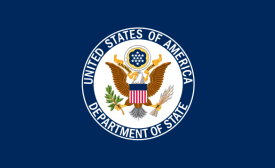public diplomacy
Think open dialogue and reconciliation and China isn’t usually the first country that comes to mind. But in 2013 China shifted its principle of “non-interference in other countries” to one of active conflict resolution in some of the world’s most intractable contexts: Israel-Palestine, Myanmar, and Afghanistan. (...) But while it may be a welcome foray, its success will be muted at best unless China can overcome one major blind spot: religion.
Enjoying steady bilateral relations since diplomatic ties were established after the Vietnam War in 1976, the Philippines and Vietnam are now engaging in high-level dialogues to try to establish a strategic partnership.
Papers voice concern over Hong Kong Chief Executive CY Leung's plan to limit the number of mainland tourists. Mr Leung said on Tuesday that he would discuss proposals to tighten the Individual Visit Scheme for mainland tourists with Beijing authorities, the Xinhua News Agency reports.
Randy Berry, currently the consul general of the Netherlands, will be tasked with promoting the human rights of lesbian, gay, bisexual and transgender individuals at home and abroad, as well as combatting violence and discrimination against LGBT people around the world, according to the Boston Globe.
With a slightly strong ‘A’ grade, the kingdom is ranked 31st globally in the ranking conducted by Bloom Consulting, a Spain-based consulting firm specializing in nation branding and destination branding with offices in Madrid, Lisbon and Sao Paulo.
In foreign policy today—especially the open-sourced, open-marketed version we now know as modern public diplomacy, small is beautiful, nimble is necessary, and bold can be risky. The Abe Doctrine combines two slogans (a) Beautiful Japan with (b) Bold Japan.

As part of its public diplomacy initiative, the spokesperson of the Ministry of External Affairs will participate in a live question-answer session on Facebook on India’s external engagements on Tuesday. The 45-minute session will start at 3:30 p.m. during which Ministry spokesperson Syed Akbaruddin will answer various questions.







